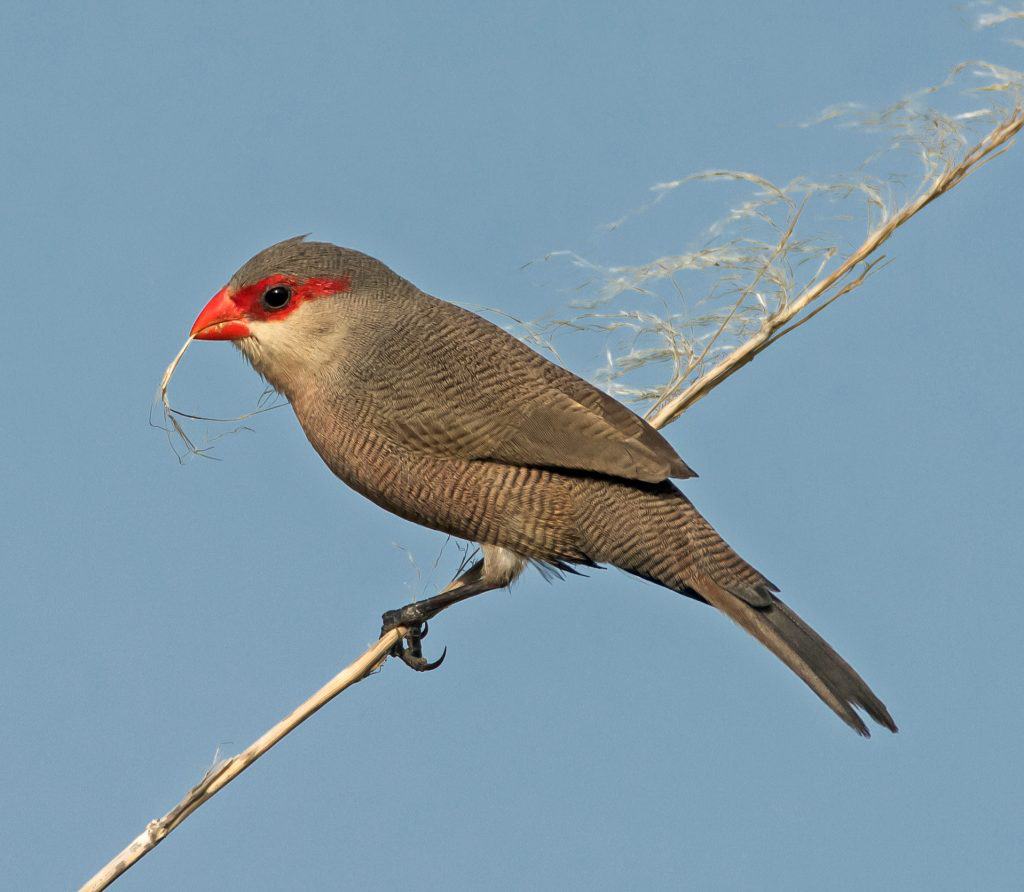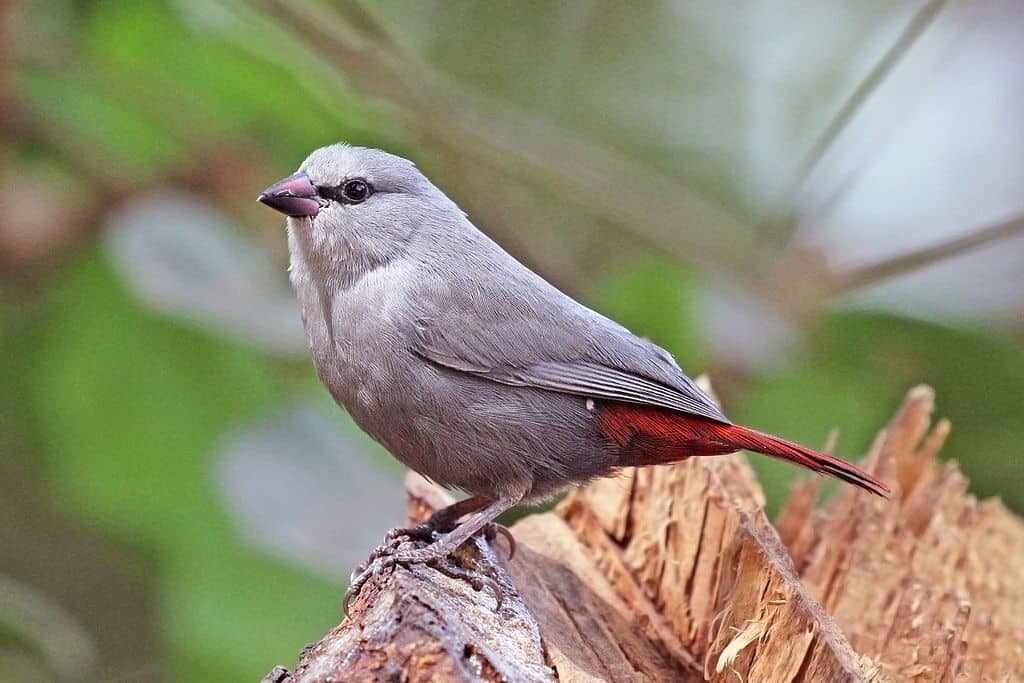Before I started keeping birds, if someone told me you could get a beautiful pale purple finch with a stunning red tail, I would have chuckled. Sure, British birds are lovely but there’s nothing remotely purple about the gang. Then I learned about the Lavender Waxbill which is definitely perfectly purple.
Who is the lavender waxbill?
So who exactly is this stunningly gorgeous purple bird? Well, the Lavender Waxbill is a member of the Estrildidae family and within that family, the branch known as the waxbills. This makes it a cousin of other familiar aviculture species such as the Common Waxbill and the Orange cheeked Waxbill.

Generally, these birds have a lavender-grey body colour with a dark crimson and black bead, black eye markings and a few white spots on the flank. Their rump, tail and undertail coverts are bright crimson red and they have black-brown feet and legs. Sexing is tricky with the hens being slightly smaller and having slightly paler shading on the belly but the only definitive way to sex is that cock’s sing and hens don’t. They are typically around 4 to 4.5 inches in length and weight around 9-10 grams.
In captivity
Personally, I haven’t had the pleasure yet of keeping these birds though they are on my list. A pair can cost in the region of £150-200 in the UK so they aren’t a species that you get involved with lightly. They also need protection during the winter as they are not a bird built for the coldness of our winter so remember you will need heating or the facility to bring them inside for the worst of the season.
Lavenders have a reputation for being a bit aggressive with others, most particularly with others of the same species. There can be some initial aggression with others birds when introduced. Yet other breeders have said that they are friendly and docile birds that live happily with others. So it seems that, like us humans, the birds can have a varied temperament from one to another!
Diet and breeding
I band these two issues together because without the right balance of the first, chances of the second being successful are reduced, as with other waxbill species. In the wild, these birds live on grass seeds and insects so this diet needs to be mirrored somewhat in captivity. Good quality foreign finch mixes can form the basis of the diet and mixed greens, fruit, berries and millet also need to be offered. Egg food is important along with sprouted seed and fresh grass seed heads.

Displays building up to breeding include head bobbing by the male while carrying a piece of nesting material, to which the hen will squat and quiver her tail. Pecking at the neck is a forerunner of mating. They then build a nest using grasses, coconut fibre and the stems from plants, lining it with finer grasses, feathers and other soft materials. They are quite adaptable in terms of nest location and will use abandoned nests from bigger birds, half open finch nest boxes as well as building their own nests in trees and bushes. They do not like nest inspections so don’t be tempted to see what is happening once they are nesting.
Typically, clutch size is 4-6 eggs and they are incubated for 12-15 days by both parents. The young fledge at around 16-18 days and are fully weaned by the age of around five weeks. When they fledge, they look like a duller version of the adults. Depending on the bird’s temperament, the young may need to be removed once weaned to avoid aggression.
Great site with a lot of useful informations for beginner and experienced breeder….
What a great site! We love the Lavvies and enjoyed these video scenes a lot.
Thank you very much for the great work.It is rare to find a site that answering our inmind questions